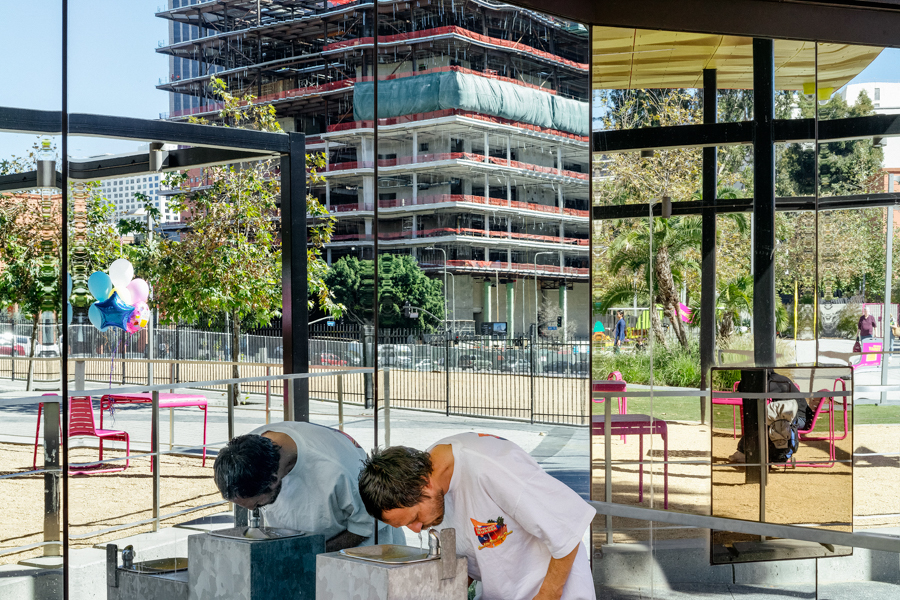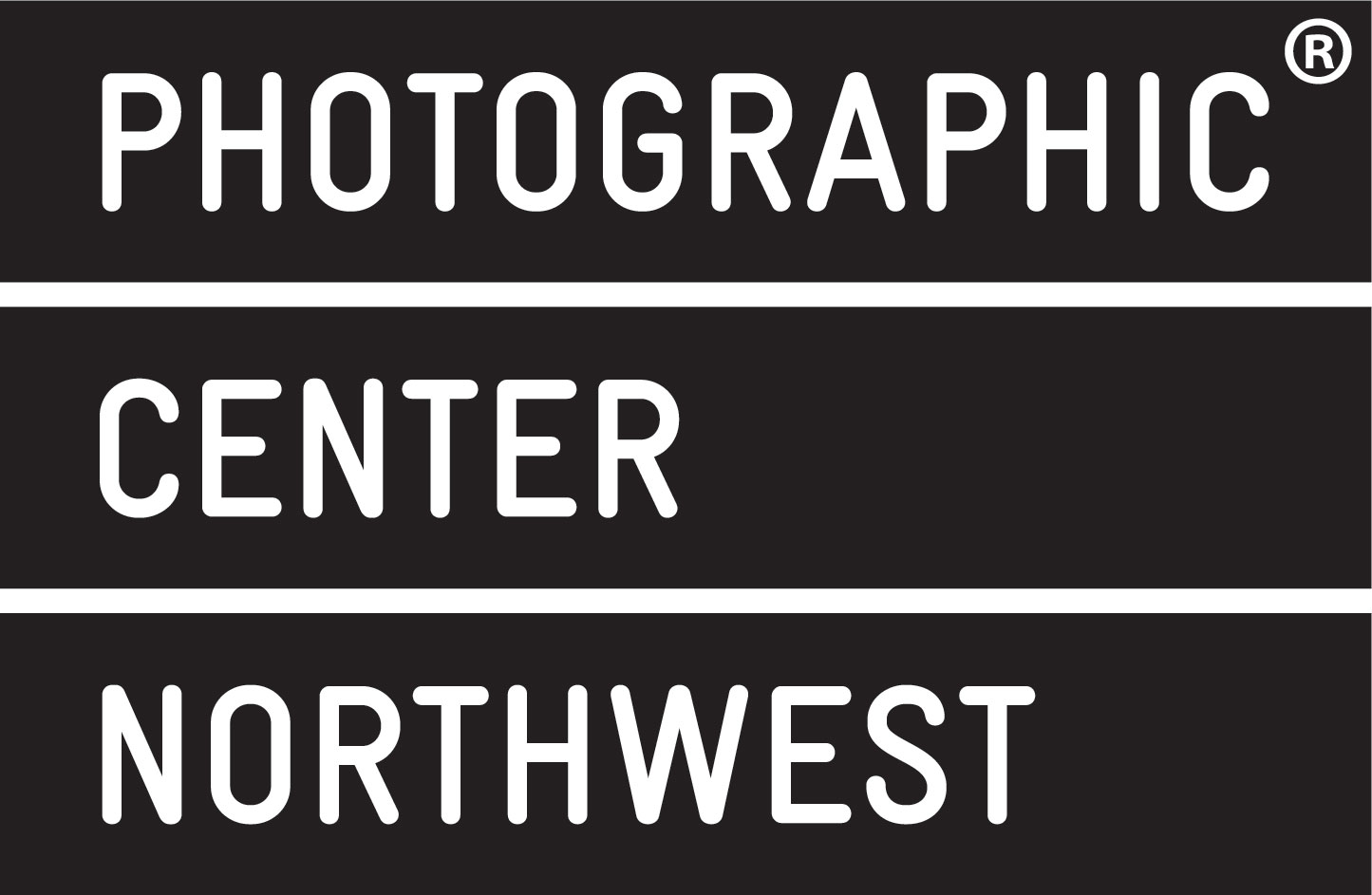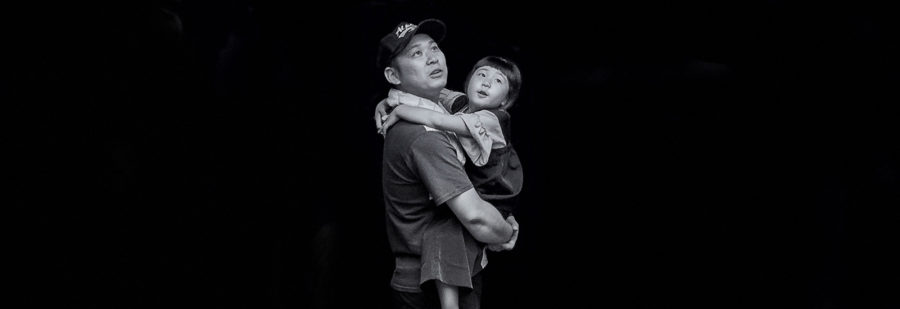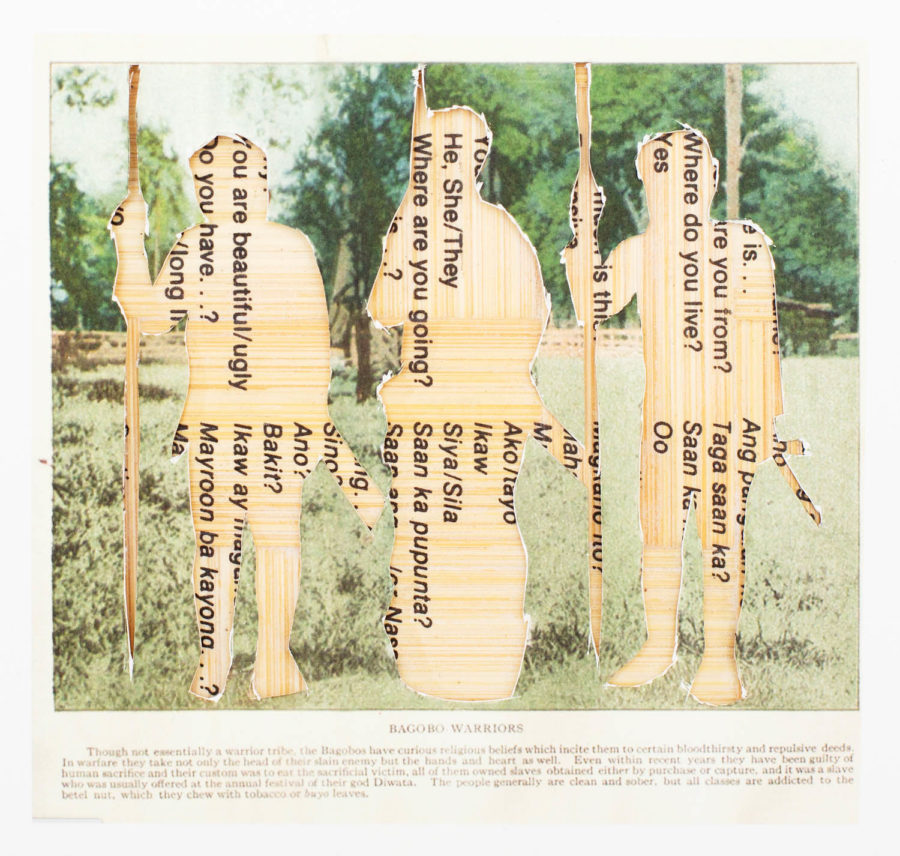Peter Baker is an exhibiting artist in PCNW’s 23rd annual juried exhibition, curated by Kris Graves.

Building for the People of the United States of America (Quality You Can Taste), Los Angeles, 2015
Archival pigment print
Edition 2/5
$3500
Please contact Erin Spencer at espencer@pcnw.org with questions or to purchase.
Tell us about yourself, where you’re from, and when you first discovered your love of photography.
My name is Peter Baker and I’m from The Bronx, New York. I really began photographing because I wanted to get out of my immediate neighborhood and explore the vastness of New York City. Having a camera allows you to go out into the world alone with no real reason. The first photographer’s work that really resonated with me was Berenice Abbott. I found a book of hers called Changing New York. I am interested in how cities change and photographing urban spaces that have an invisible history and unknowable future. She made complex, descriptive images of the city. There is a physicality to her work that I continue to relate to.
Tell us about the work that was selected to be included in Distinction by Kris Graves.
The image selected for the show is called Building for the People of the United States of America (Quality You Can Taste), Los Angeles. The first part of the title was taken from a sign I saw advertising for the building under construction that you can see in the reflection of the image. It’s the new Los Angeles Federal Courthouse. I took the language of that sign as an ironic metaphor. Downtown Los Angeles has been undergoing a building boom but the reality is that it’s a boom for a certain class of people, and it further alienates the existing community, and especially the large homeless population. That building, now fully functioning, is an emblem of power and progress, guarded with armed security and surveillance. Everything about it is meant to keep people away. The man drinking from the water fountain is wearing an In-N-Out t-shirt that reads Quality You Can Taste, which I found interesting since he’s literally tasting the city’s water. He is surrounded by glass and is doubled in the reflection. Like much of my work, it’s an image about progress, about the present and the future, and the interplay of the physical and psychological. Then there are also the balloons. Like a party has ended.
Is the selected work part of a larger body of work?
Yes, this is from an ongoing body of work under the working title “Current Treatment” and a future book called A Confrontation, Los Angeles. The work deals with urban space and its consequences. Most of downtown Los Angeles is private property that guises itself and continues to encroach on public space. I find this to be both bizarre and concerning, with psychological and physical consequences. The whole of downtown begins to feel more like a film set, an illusion of a city, rather than a city itself. And yet at the same time some very stark human and socio-economic realities play out in these spaces. This is the terrain I work within.
Who / what are your biggest influences?
The most integral influence on my photographic work has always been reading fiction. I think about writers like Don DeLillo and JG Ballard. They both find ways to confront reality through fiction, and I think photography can do that as well. They are the people I would want to show my work to. There are many photographers I have studied and admire, especially Garry Winogrand, Jeff Wall, Luigi Ghirri, to name a few.
Are you making work in response to the current pandemic?
I have used this time mostly to go through images and print in my studio. But I have gone out to photograph, yes. In many ways, my work is about a kind of social-distancing without the pandemic. When I am out in downtown LA or many other cities I see most people are distant from one another even within the same physical proximity. It’s a fundamental part of my work.
PCNW’s annual juried call for entry provides exhibition opportunities for artists and directly supports our programs, scholarships, and labs at PCNW. This helps ensure access to photography for many future generations of creatives. We know you have many options for submitting your work, so please tell us why you chose PCNW? What are your thoughts and experience with submitting your work to different calls?
PCNW looked like a cool place and I was looking forward to visiting Seattle for the opening because I really enjoy the city and region! Hope to see you there when things open up again.



